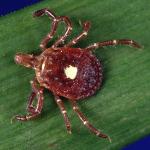Perhaps the strangest medical phenomenon discovered in recent years is a link between the lone star tick and an allergy to red meat.
anaphylaxis
On my recent flight to New York City, an attendant announced that a passenger had a severe peanut allergy. If any of us had brought food containing peanuts, it was requested that we put it away for the entire flight.
Many people think they have a drug allergy, when in fact what they have is drug intolerance. According to the CDC, approximately 10% of all U.S.
Anaphylaxis (a severe, systemic allergic reaction) can be life-threatening.





